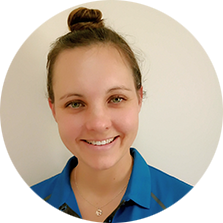Walking more during COVID? Why you need to incorporate resistance training into your routine
Longevity Exercise Physiology Drummoyne, Edgecliff, Marrickville, Bella Vista, Randwick, Pymble, Neutral Bay and Balmain want to talk about your exercise during lockdown.
With greater Sydney seeing the harshest restrictions since the beginning of the pandemic, our options for healthy activity have somewhat diminished. To help maintain physical and mental health in this time, we have seen more people turn to walking, especially out in nature. While we applaud you for getting out and burning off some of those COVID kilojoules, we also wanted to flag that increased walking can potentially pose some risks.
As we see more people get out and pound that pavement, we are also seeing an increase of pain in the joints, especially the knees and hips. The likely occurrence of this is due to an imbalance in the body’s capacity for the task, and the load placed upon it. You see, while walking is usually a great form of exercise, if we haven’t conditioned the body correctly for the activity, we are increasing our risk of injury. This is why you will hear your Exercise Physiologists harp on about resistance training. A great blog written by our Exercise Physiologist Josh goes into more detail discussing load management.
The Australian Physical Activity Guidelines state we should be completing 2.5-5hours of moderate intensity exercise each week, and brisk walking is a great option for this. It also states however, that we should be completing 2 resistance training sessions a week in conjunction to this.
If our muscles are strong, they enable efficient and effective movement, helping the joints move in the way they want to
The reason resistance training is so important is that it helps build strength in our muscles for daily activity. If our muscles are strong, they enable efficient and effective movement, helping the joints move in the way they want to. If our muscles are not up for the challenge, they can become fatigued, potentially leading to poor movement patterns. If these patterns are continually repeated there is an increased risk of injury.
The good news is there are a number of exercises you can do at home to help build your strength. While global strengthening is recommended to allow for optimal movement, we have focused here on some lower body examples.
- Sit to stand: This is a great functional activity to get all the muscles in your legs moving. Simply sit on a stable chair with you feet placed firmly on the ground, shoulder width apart. Place your hands across your chest, or onto the chair to assist with the push off. Rock your body forward, and as your nose goes over your toes push through your feet and stand up.
- Calf raises: Strengthening the calves will help give you that extra push off, and some extra grunt on those hills. Simply stand with your feet slightly apart and raise up onto your toes. If you find this exercise easy, try doing it one leg at a time (ensuring you have something to hold onto).
- Step ups: Who doesn’t love stairs right? Like the sit to stand this is a very functional task and gets all of the lower limb working. This exercise also helps get the heart rate up so is additionally great for improving your cardiovascular fitness. Steps ups can be done by simply going up and down a single stair repeatedly, or you can find a flight of stairs somewhere and try your luck, if safe to do so.
- Romanian deadlifts: This exercise helps strengthen our posterior chain, getting a little closer to that Beyoncé booty. For walking it will help with the push off motion, allowing you to propel forward more effectively. Strengthening these muscles can also help with stability of the hips and lower back and subsequently decrease the risk of lower back pain. Stand with your feet shoulder width apart with soft knees and the desired load in front. While maintaining a neutral spine, slowly bend forward hinging from the hips and running the weight along the thighs. Allow the knees to bend along the way. This is quite a complicated move to master and should be taught properly 1 on 1 with an exercise professional.
- Lunges: We can’t forget about these. Another global lower limb workout, the lunge is a great resistance training exercise. Place one foot forward and one foot back in line with each respective hip. Keep the body upright and slowly lower the back knee toward the ground. Ensure to push through the front heel upon rising. Similarly to the Romanian deadlift, the lunge is a complex task with a lot of nuances. We recommend if wanting to try out this bad boy you should seek advice from an Accredited Exercise Physiologist first.
With the end of lockdown almost here, we want to make sure our bodies are ready for all the fun activities about to open up to us. While we discussed above the importance of doing resistance training to compliment your current cardiovascular training, it is even more important when the increase of activity occurs once we reach 70% double vaccinated.

We need to take care of our bodies so they can take care of us. If you, or anyone you know may need a little help in the right direction call 1300 964 002 to speak to one of our Exercise Physiologists today. Give us a chance to show you how regular exercise is not only great for your health but also a wonderful way of life.
(Click on the video link below for demonstrations of all exercises)
Written by Naomi Birchnoff

